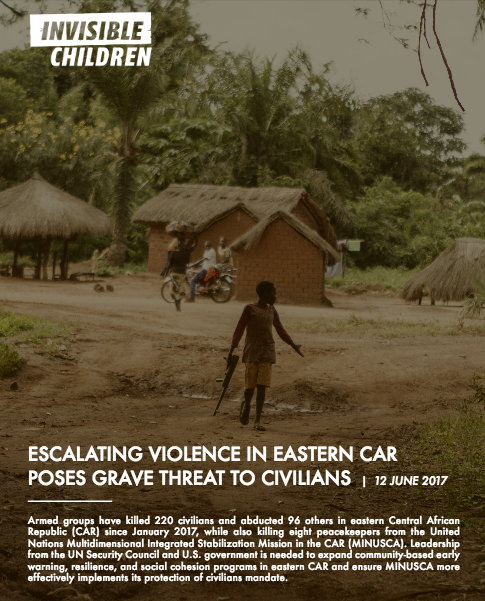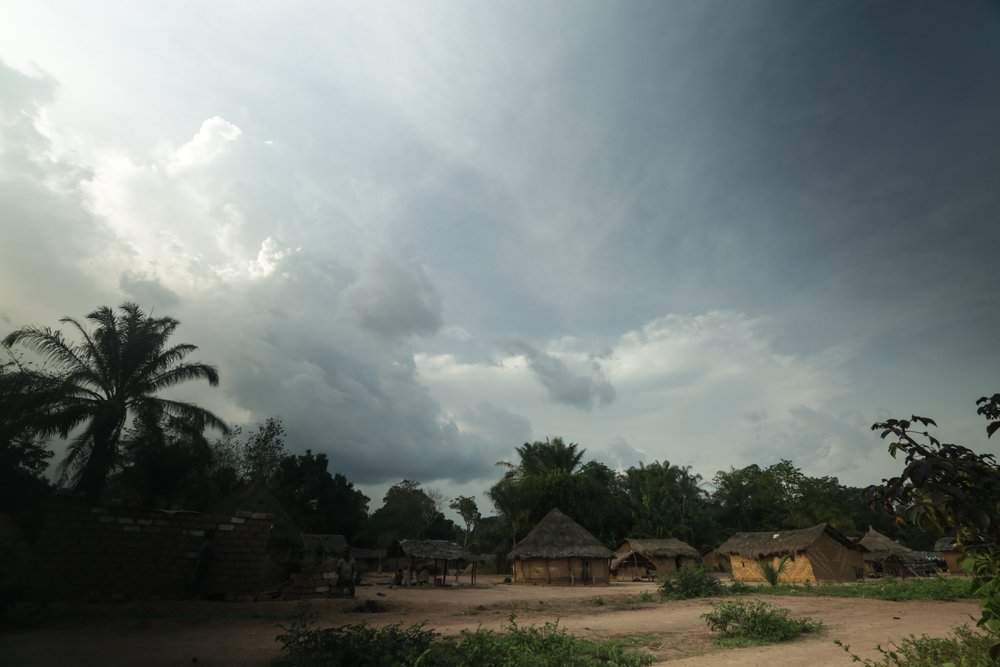Earlier this week, the United Nations (UN) Security Council met to discuss MINUSCA, the UN’s peacekeeping mission in the Central African Republic (CAR), as well as the UN office responsible for coordinating regional responses to the Lord’s Resistance Army (LRA) crisis. Much of the Council’s conversations centered around eastern CAR, where communities have experienced an alarming increase in violence so far this year, and where Invisible Children operates many of our community protection programs. To help inform these meetings, our team produced a report on armed group violence in eastern CAR, including recommendations for the Security Council and other international leaders. You can read the report here.

The recent escalation in armed group violence targeting both civilians and MINUSCA peacekeepers in eastern CAR made this week’s UN Security Council meetings incredibly timely. Our Early Warning Network has been reporting much of this violence, visible on our LRA Crisis Tracker. For example, we have recorded 132 civilians killed by armed groups during the month of May in the towns of Bangassou and Bria, and 51 civilians abducted so far this year in CAR’s Haut Mbomou prefecture. Additionally, eight UN Peacekeepers stationed in eastern CAR have been killed by armed groups so far in 2017. This comes just as US and Ugandan troops are winding down counter-LRA operations in eastern CAR, leaving behind a security vacuum that puts thousands of people at greater risk of attack by the LRA and other armed groups.
In order for international actors like MINUSCA to ensure that communities are safe and prevent further violence, it’s important to understand the roots of this violence and the history of conflict in eastern CAR. Because our Early Warning Network and Crisis Tracker have been documenting violence in eastern CAR since 2012, our team is able to provide helpful data and analysis, which, in turn, can inform more effective responses. Our report highlights many long-standing sectarian divides in CAR, which have been heightened by decades of economic marginalization and triggered by conflicts over land and precious minerals such as gold and diamonds. These divides and the increasing tension they’ve caused have contributed to recent outbreaks of violence in the region and highlight the need for focused efforts to promote long-term social cohesion at the same time that civilian protection efforts are carried out. For more detailed analysis, check out the report we released this week.

Many remote communities in CAR are vulnerable to attacks due to their isolation from other communities and a lack of infrastructure.
To improve security in eastern CAR over the long-term, the UN Security Council must ensure that MINUSCA is well-funded, well-equipped, and held accountable to protecting civilians in eastern CAR. UN interventions in CAR should include context-appropriate support to locally-led mediation and civilian early warning mechanisms, such as local Peace Committees and the Invisible Children supported Early Warning Network. UN missions must also improve efforts to track and deter the movement of LRA forces, poachers, and other armed groups across CAR’s borders with neighboring areas of the Democratic Republic of the Congo and South Sudan.
Additionally, our representatives in the U.S. Congress should ensure that the 2018 federal budget meets United States peacekeeping funding obligations and continues to fund the State Department and USAID at levels matching or exceeding those of previous years. With US troops withdrawing from CAR, the need to invest in locally-led protection programs like our Early Warning Network, local Peace Committees, and community-based trauma healing workshops is even more urgent than ever.
Think people should hear about this?